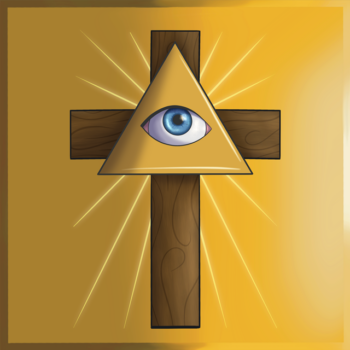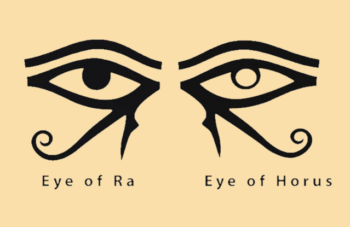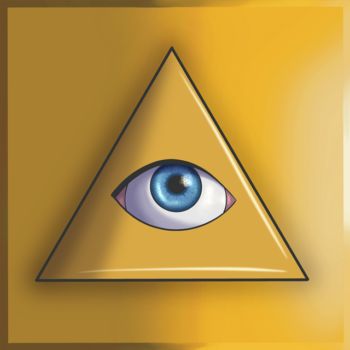Definition:
The word “soul” is a fictional concept that refers to the core of consciousness in any living organism that defines individuality.
Etymology:
The term “soul” originates from the Old English word “sāwol” or “sāwel,” which traces back to the Proto-Germanic “saiwalo.” This word likely comes from an older Indo-European root associated with concepts of life, breath, or the animating principle. Related terms appear in other Germanic languages, such as Old High German “sēula” and Gothic “saiwala,” which also refer to the spiritual or eternal essence of a being.
Description:
Even though some religions don’t have a concept of the soul or its eternity, most religions do teach that the soul exists forever. There are very few exceptions to this. For instance, certain Christian denominations (e.g., Seventh-day Adventists) teach annihilationism, where the wicked are destroyed completely rather than suffering eternally. Buddhism, on the other hand, has the concept of a “stream of consciousness,” which bears similarities to the concept of a soul. But in Buddhism, when one living organism dies, the stream of consciousness is reborn into a new living organism. This cycle of life continues not indefinitely but until the stream of consciousness attains Nirvana.
The soul is typically defined as immaterial, meaning it doesn’t actually exist; is not a physical entity and cannot be measured or observed scientifically. It only “exists” in a sort of fantasyland called the “spiritual realm.” While a few people claim the soul is material, they are unable to identify its location within the body when asked. Additionally, there are widely circulated but false claims, such as the idea that scientists have proven the existence of the soul by weighing a body before and after death, observing a loss of weight that supposedly indicates the soul leaving the body. These claims, like the 1907 experiments by Dr. Duncan MacDougall, have been debunked due to flawed methodologies and lack of reproducible results. Click to read the Wikipedia article.
Articles:
Belief
Definition: “Belief” is to accept something as accurate without proof. “Faith” is to accept something as accurate even when you have proof to the contrary. Etymology: The word “believe” originates…
Dark Soul
Definition: A “dark soul” is a fictional concept that often refers to a being or entity deeply associated with evil, malevolence, or the worship of darkness. This term may denote…
Soul Absorption
Definition: “Soul absorption” refers to the fictional concept of absorbing, devouring, or consuming the essence of a soul. The soul, regarded as the immortal or spiritual core of an individual,…
Spirit
Definition: The word “spirit” is a fictional concept that generally refers to the non-physical essence of an organism, often associated with consciousness, soul, or life force. It can also denote…
Symbolism:
The soul is nothing more than a code word for fantasy, and the pineal gland and the heart are symbols that represent fantasy. The pineal gland, a small structure in the brain that regulates sleep, has been mythologized as something far more profound. René Descartes played a significant role in spreading the idea that the pineal gland was where the soul and body interacted, purely because it’s a single structure in an otherwise paired-brain system. This belief, however, wasn’t unique to him. Similar ideas can be traced back to Egyptian mythology, where the pineal gland—or what it symbolized—was linked to spiritual enlightenment and the divine. Over time, spiritual traditions elevated it further, associating it with the so-called “third eye,” a supposed gateway to intuition and other imagined realms.
The heart’s role as a symbol of the soul follows a similar trajectory. Its biological importance and its visible responses to emotions, like racing during excitement or fear, made it an easy metaphor for life and inner essence. Religious and cultural stories frequently use the heart to embody morality, love, and the soul itself. For instance, in Christianity, the heart is often framed as the moral center of a person, while in Hinduism, it’s described as the seat of the atman, or divine spark.
Both the pineal gland and the heart continue to serve as stand-ins for the soul, but they are ultimately just symbols—creative expressions of a desire to make sense of life and death through fantasy.
“The eyes are the window to the soul” is a popular saying that hints at the eye being a symbol for the soul.
The soul is often portrayed as a glowing sphere, radiating light and energy. This image naturally ties the soul to symbols like the star, the sun, and the orb, which share similar qualities. Light is the most important attribute of how the soul is portrayed, as it symbolizes movement and vitality. This radiant imagery suggests the soul’s dynamic and life-giving essence.
Whenever people illustrate someone lacking a soul, it is often depicted as a dark hole in the chest, a void where light and energy are absent. This stark contrast emphasizes the importance of light in defining the soul’s presence and vibrancy.
There is also the fictional concept of a dark soul, which inverts the typical associations of light and goodness. The dark soul is often depicted as heavy, consuming, and static, a force opposed to the luminous and dynamic qualities of a typical soul. These portrayals highlight the duality of light and darkness as symbols for the essence of being, further connecting the soul to the celestial imagery of stars and orbs.
The phrase “a soul” and the word “asshole” are homonyms, sharing a symbolic connection. A star often represents the concept of a soul. At the same time, the shape of a star can also symbolize the anatomy associated with an “asshole.”
Articles:
Eye
Definition: The “eye” is a complex sensory organ responsible for vision. It detects light and converts it into electrochemical signals, which are then processed by the brain to produce images….
Eye of Deception
Definition: The “Eye of Deception” is a symbolic representation that what is being observed or conveyed is false or misleading. It serves as a warning or indication that what is…
Eye of Fantasy
Definition: “Eye of Fantasy” refers to the symbol of a single eye used to represent a situation that is impossible, unrealistic, or inaccurate. It is often used to indicate that…
Eye of Jesus
Definition: The term “Eye of Jesus,” also known as the “Eye on the Cross,” typically refers to a metaphorical or symbolic concept within Christian theology and spirituality. It is not…
Eye of the Devil
Definition: The “Eye of the Devil” typically refers to a malevolent, watchful gaze that symbolizes evil, misfortune, or a sinister presence. It can be interpreted literally, as an actual eye…
Eye of Truth
Definition: The “Eye of Truth” is a symbolic concept carrying dual meanings. The Eye of Truth is used by spiritual people as a metaphor for seeing that which does not…
Eyes of Horus
Definition: The “Eyes of Horus” is an ancient symbol originating from ancient Egyptian mythology where a set of two eyes were referred to as the Eyes of Horus, Udjat, or…
Love
Definition: The word “love” is a label for a complex and multifaceted emotion, encompassing feelings of deep affection, attachment, care, and compassion for someone, something or some idea. It comes…
Seal of Solomon
Definition: The “Seal of Solomon,” also known as the “Ring of Solomon,” is a symbolic emblem attributed to King Solomon, a wise and powerful monarch in Jewish, Christian, and Islamic…
Star of David
Definition: The “Star of David,” also known as the “Magen David” (Shield of David), is a hexagram or six-pointed star formed by two interlocking triangles. It is a prominent symbol…
The All-Seeing Eye
Definition: The “All-Seeing Eye,” also known as the “Eye of Providence” or the “Eye of God,” is a symbol often depicted as an eye enclosed in a triangle and surrounded…
Religion:
In the Old Testament of the Bible, the Hebrew word “nephesh” is often translated as “soul” and is used to denote life or breath. In Genesis 2:7, it says: “Then the LORD God formed man from the dust of the ground and breathed into his nostrils the breath of life; and the man became a living soul.”
In the New Testament of the Bible, the Greek term “psyche” refers to the soul, often as the eternal aspect of a person. In Matthew 10:28, it says: “Do not be afraid of those who kill the body but cannot kill the soul. Rather, fear him who can destroy both soul and body in hell”.
In the Book of Mormon, the soul is mentioned as eternal and central to divine purpose. In Alma 40:11, it says: “Now, concerning the state of the soul between death and the resurrection—Behold, it has been made known unto me by an angel that the spirits of all men, as soon as they are departed from this mortal body, are taken home to that God who gave them life.”
In the Quran, the Arabic word for soul, “nafs”, is mentioned frequently. In Surah Al-Isra (17:85), it says: “And they ask you about the soul. Say, ‘The soul is of the affair of my Lord. And mankind has not been given of knowledge except a little.'” The soul is central to discussions of morality, judgment, and the afterlife.
In various Hadiths, the soul’s creation, journey, and destiny are detailed. For instance, the soul is said to be created 120 days after conception, and its destination is determined by God.
In Buddhism, the concept of a permanent soul (“atman”) is generally rejected. The idea of “anatta” (non-self) suggests that what we perceive as a soul is a collection of transient elements (skandhas).
In Hinduism, the “atman” is the eternal self or soul, distinct from the physical body and mind, central to the pursuit of moksha (liberation). In Bhagavad Gita Chapter 2, Verse 20, it says: “For the soul, there is neither birth nor death. It is not destroyed when the body is destroyed.”
Norse mythology does not have a direct equivalent to the concept of the soul but describes entities like the “hugr” (mind) and “hamr” (body’s form), which together may parallel the idea of a soul.
The Satanic Bible by Anton LaVey often critiques the concept of the soul, viewing it as an abstract or manipulative religious tool rather than a tangible reality. It emphasizes the material and earthly over spiritual metaphysics.





